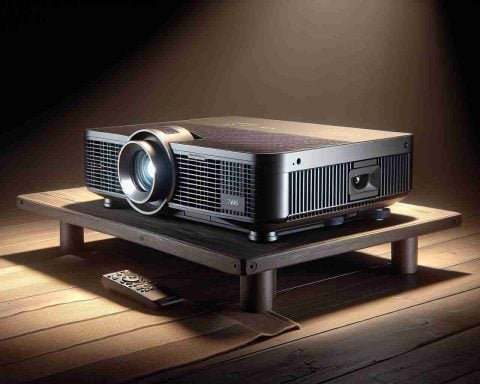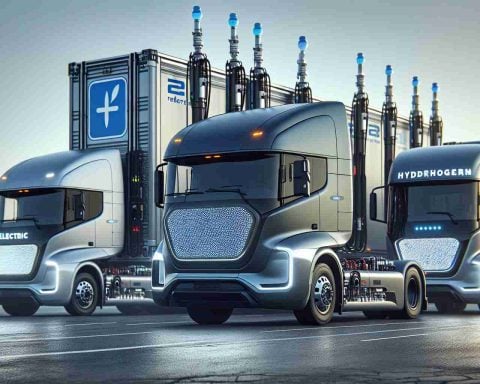Ola Electric experienced a significant downturn as its shares declined by 5.5% to Rs 81.20 on Monday morning. This drop followed an alarming 33% plunge in November sales, with just 27,746 units sold. Despite retaining a market lead with a 25.09% share, the gap between Ola and close competitors TVS and Bajaj Auto tightened, heightening competition in the electric vehicle scene.
In contrast, TVS Motors reported 26,036 registrations, capturing a 23.55% market share, while Bajaj Auto recorded 24,978 sales with a 22.59% market share. The entire electric vehicle sector faced an 18% drop in registrations during November compared to October, a consequence of a post-festival slump.
Over the year, Ola has maintained its front-runner status, selling 392,176 vehicles, equating to a 37% market share. TVS follows with a 19.5% share, selling 201,966 units, and Bajaj at 16.6% with 173,721 sales. Additionally, Ather Energy holds a significant 11% stake, exceeding 100,000 units sold.
Despite these annual figures, Ola’s market share has shown volatility in 2024, seeing a high of 49.8% in May before declining. The November sales dip highlights the intensifying competition from TVS and Bajaj, pointing to a potentially tight race for leadership in 2025.
In financial performance, Ola Electric reported Rs 495 crore in net loss for Q2 FY25, a slight improvement from the previous year’s Rs 524 crore loss. Revenue from operations grew by 39% to Rs 1,214 crore, yet sequential losses increased, reflecting ongoing operational challenges.
Challenges and Opportunities in the Electric Vehicle Market
The Competitive Landscape of India’s Electric Vehicle Market
In recent months, the competitive landscape of India’s electric vehicle (EV) market has undergone significant shifts, largely driven by sales patterns, financial performances, and strategic positioning among major players. Notably, Ola Electric, TVS Motors, and Bajaj Auto have been navigating this evolving market with varying degrees of success and challenges.
Sales Trends and Market Dynamics
November marked a particularly challenging period for Ola Electric, with a notable 33% drop in sales, translating to 27,746 units. This decline impacted Ola Electric’s stock price, causing a 5.5% dip to Rs 81.20. Despite this, Ola continues to hold a leading 25.09% market share, although the gap with competitors like TVS Motors and Bajaj Auto has narrowed significantly. For context, in November, TVS Motors recorded 26,036 registrations with a 23.55% market share, while Bajaj Auto achieved 24,978 sales, capturing a 22.59% market share.
Year-to-date figures reveal that Ola has maintained a formidable position with 392,176 vehicles sold, representing a 37% market share. However, TVS and Bajaj are close on its heels, with TVS holding a 19.5% share and Bajaj at 16.6%. Ather Energy is also a significant player, boasting an 11% market stake with over 100,000 units sold.
Financial Performance and Challenges
Ola Electric’s financial trajectory presents a mixed picture. In Q2 FY25, the company reported a net loss of Rs 495 crore, a slight improvement from the Rs 524 crore loss in the same quarter the previous year. Although revenue from operations grew by 39% to Rs 1,214 crore, indicating robust sales potential, the increase in sequential losses underscores ongoing operational challenges.
Strategic Approaches: Innovation and Market Expansion
To counteract the recent downturn, Ola Electric, along with its competitors, is expected to double down on innovation and market expansion efforts. New product launches, enhancements in battery technology, and expanding charging infrastructure could serve as pivotal strategies to capture consumer interest and drive sales.
Future Direction: A Tight Race Ahead
Looking ahead to 2025, the race for market leadership among these automotive giants is poised to become even more competitive. As the market matures, key factors such as product differentiation, customer service, pricing strategies, and regulatory changes will be instrumental in determining market leaders.
Conclusion: Navigating a Challenging yet Promising Landscape
The Indian electric vehicle market remains a dynamic and challenging environment, with both risks and opportunities at play. For more insights into the evolving EV landscape, visit Ola Electric, TVS Motors, and Bajaj Auto.
As these companies adapt to changing market conditions and consumer expectations, their ability to innovate and strategically maneuver will dictate their success in the burgeoning EV sector.













